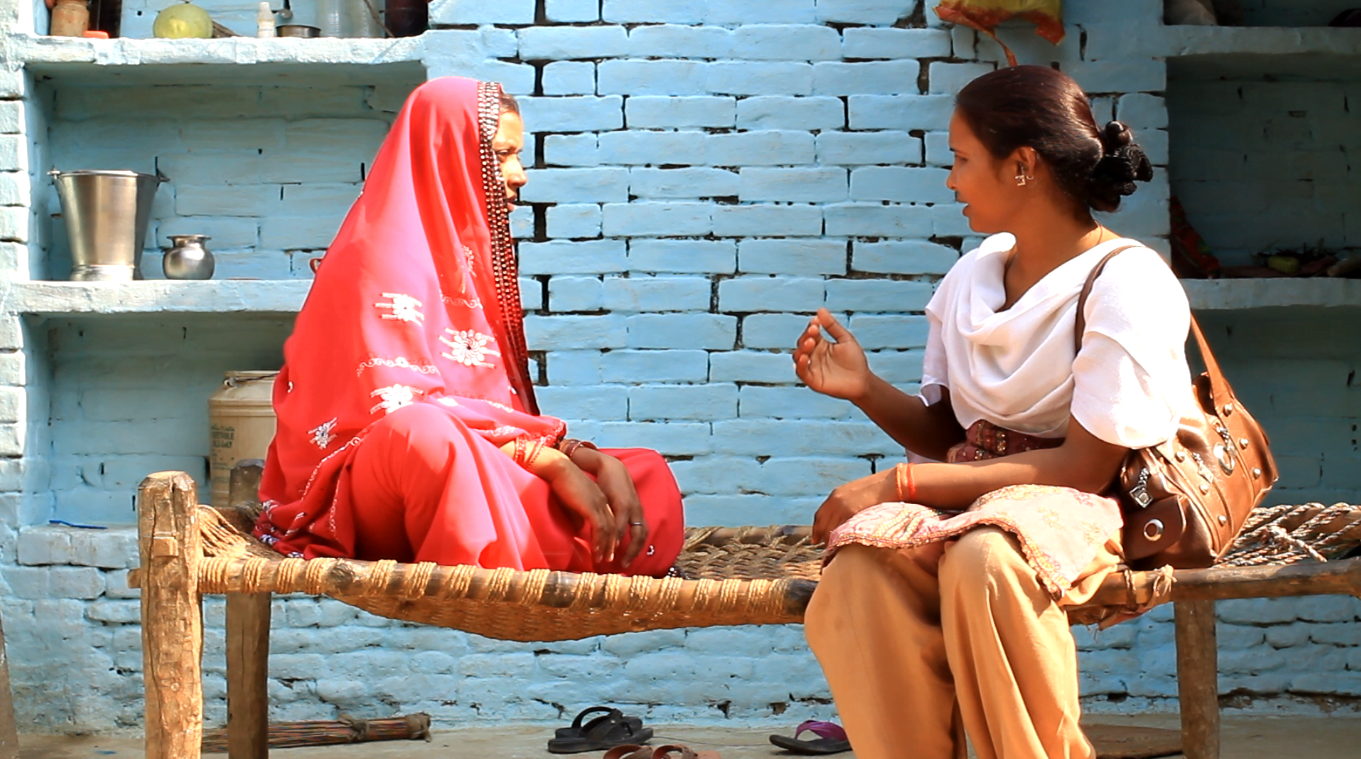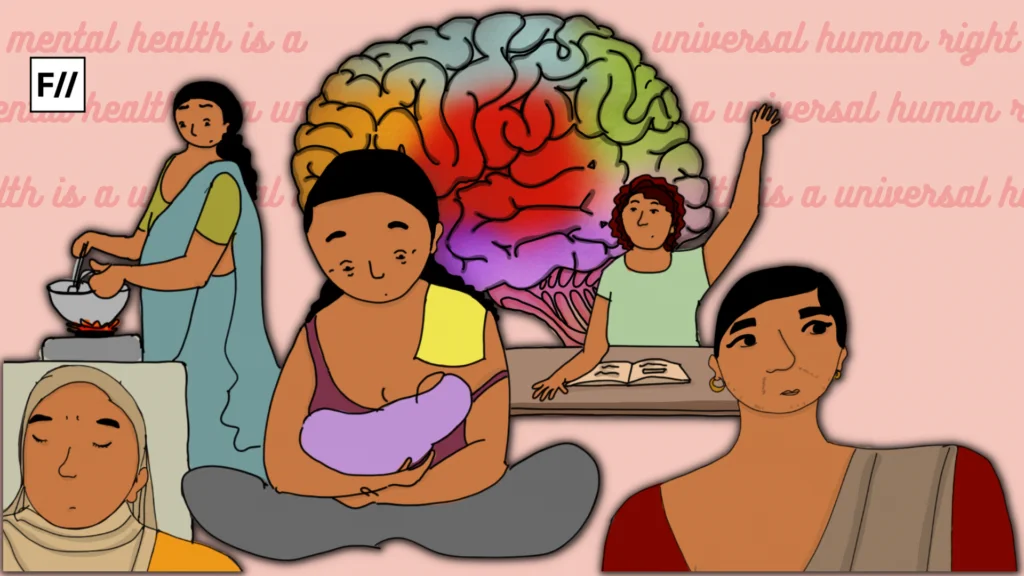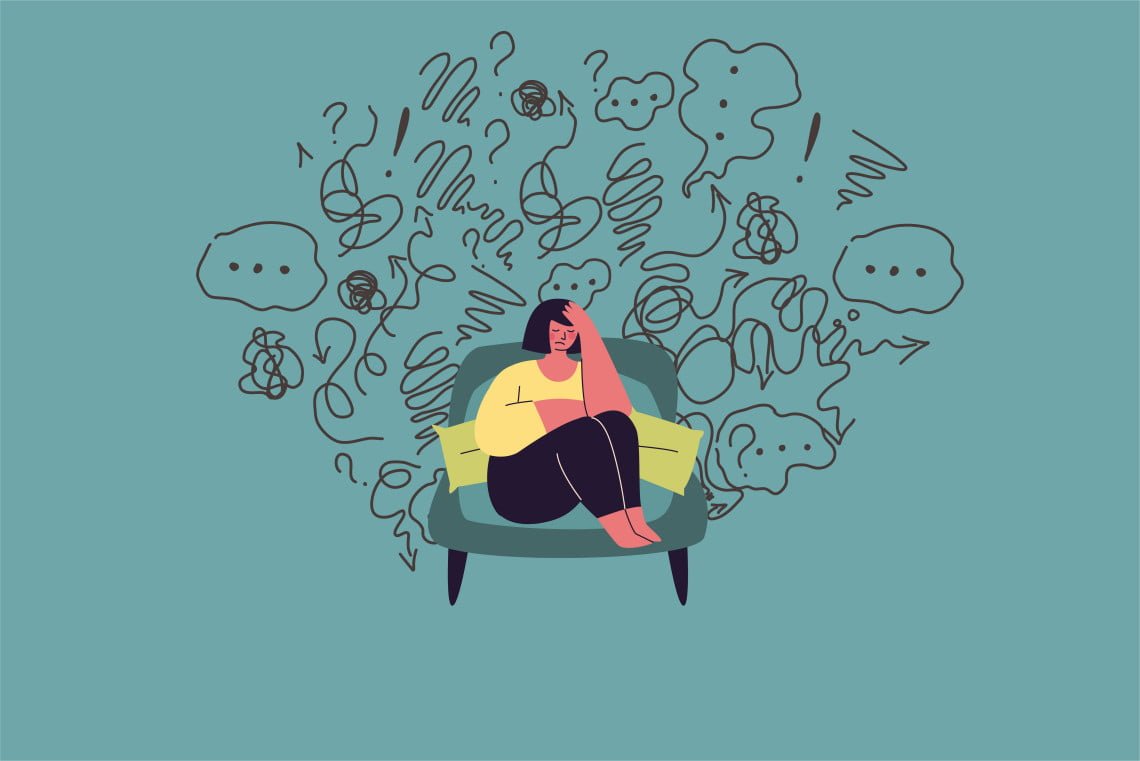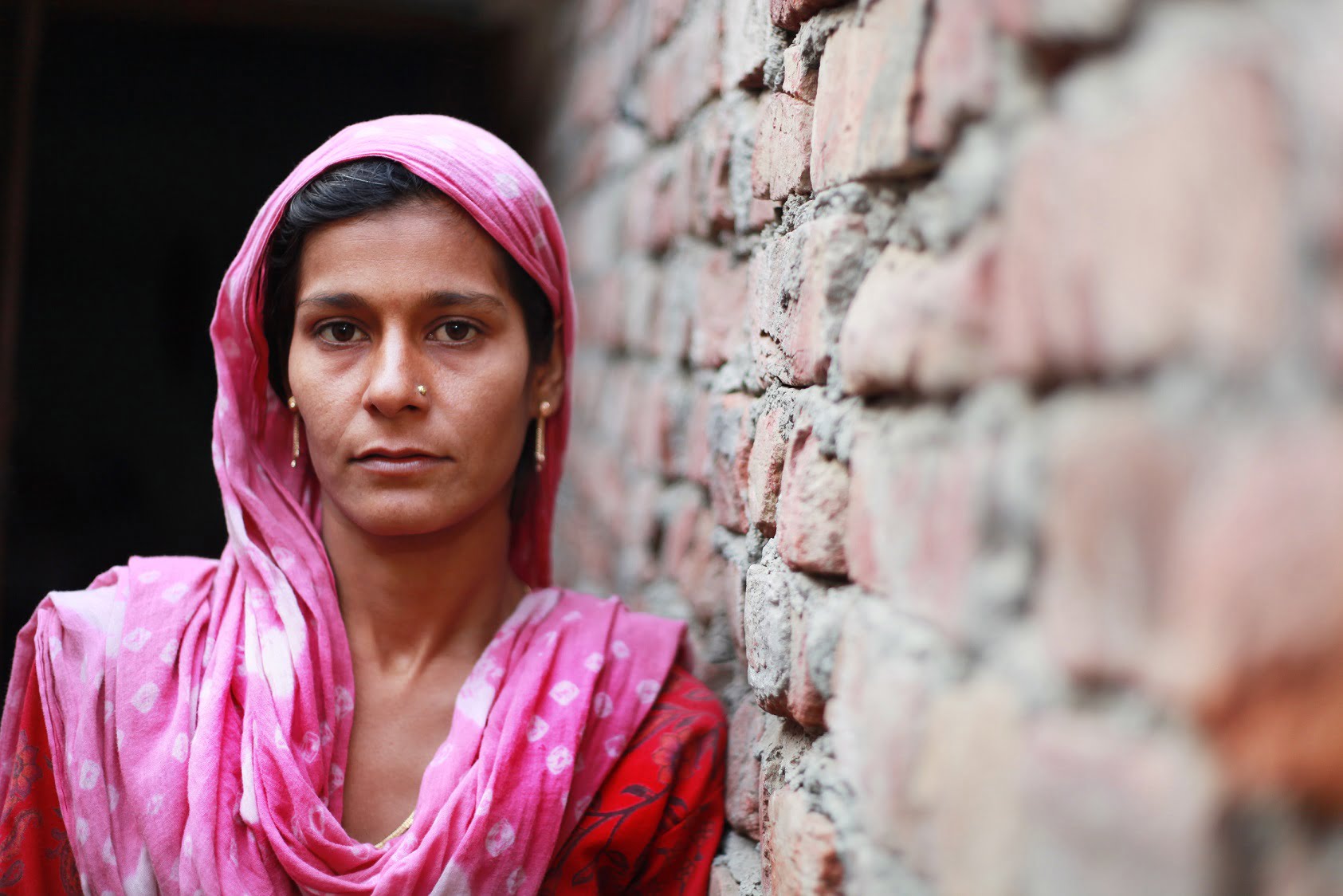‘No one gets depression in villages, everyone is happy there’ This comment was made by Nawazuddin Siddiqui on depression (mental health issues) which was surfing the internet and was receiving a lot of criticism. According to Nawaz, depression doesn’t exist in the village, it only exists in the city. To be precise, his comment was ‘I come from a place where, if I told my father that I am feeling depressed, he would give me one tight slap… Depression waha nahi tha, kisi ko bhi nahi hota waha depression, sab khush hai. But I learned about anxiety, depression, and bipolar after coming to the city.’
The gap between the rural and urban areas regarding awareness and accessibility for mental health issues is bigger than we think.
The gap between the rural and urban areas regarding awareness and accessibility for mental health issues is bigger than we think. While there has been an increasing focus on mental health in urban areas, the challenges faced by rural India are often overlooked. One of the primary reasons for this disparity is the fact that rural populations are still struggling with fulfilling their basic needs. The estimates from the National Mental Health Survey suggest that 15 crore (150 million, 12.5%) people need active interventions for mental illness in India.
Women who are fighting for gender equality in Lalitpur’s rural villages (who themselves are the victims of several kinds of abuse) are dealing with a lot of mental health issues. Lalitpur in UP, is still struggling for food, clothes, housing, justice, education, health, and equality (gender, caste, and class). Lalitpur is an economically and educationally backward area, dominated by patriarchal, casteist, and feudal social relations. According to the 2001 census, ~45% of women and 33% of girls are educated (7 years and above) in Lalitpur. Herein, Dalit women, who are doubly oppressed, face higher risks of gender and caste-based violence.
In the kind of work they are doing on the ground, witnessing violence becomes a part of their daily lives. They forget to think about their mental health and process their own emotions. Their idea of taking care of themselves is to work and help more and more women so they don’t have to go through the kind of abuse they have experienced in their lifetime.
In India, we have a Mental Health Act, an Act lauded by the policymakers for its patient-centric approach. But, if we talk about its implementation, Karnataka is the only state to have got its act together and set up the mandated State Mental Health Authority (SMHA), the Mental Health Review Board notified of the new act’s rules. There are a lot of questions that are still unanswered and its poor implementation makes it worse. According to Psychiatrist Harish Shetty from Mumbai, ‘There are not enough psychiatrists to run mental health hospitals’. He believes the government needs to either upgrade mental health hospitals into medical colleges or run postgraduate courses in psychiatry.
When we talk about mental health we cannot ignore the fact that mental health issues are not something that happens because of some virus. Our surroundings, family, caste, class, gender affect it. Rural women and children are particularly vulnerable to mental health problems. Gender-based discrimination, domestic violence, and lack of empowerment add to their psychological burden. A study published in the Journal of Mental Health and Human Behavior emphasised the high prevalence of depression among rural women, linking it to their lower social status and limited decision-making power.

According to the National Rural Health Association, the following factors are particular challenges to the provision of mental health services in rural communities:
- Accessibility – Rural residents often travel long distances to receive services, are less likely to be insured for mental health services, and providers are less likely to recognise a mental illness. The mental health workforce and facilities largely revolve around the major cities and in the private sector.
- Availability – Chronic shortages of mental health professionals exist and mental health providers are more likely to practice in urban centers. There are just 0.3 psychiatrists, 0.07 psychologists, and 0.07 social workers per 100,000 people in India.
- Affordability – As we know mental health treatment is still a private-dominated sector in India, where people in Urban areas are struggling to afford it whereas, Rural India is still struggling to access the basic needs of health.
- Acceptability – Rural residents may be more susceptible to the stigma of needing or receiving mental healthcare in small communities where everyone knows each other and fewer choices of trained professionals can lead to a lack of faith in confidentiality, as well as a reliance on the informal care of family members, close friends, and religious leaders.
Local knowledge and community healing
Community mental health could be one of the solutions to fill this gap. There is an increasing need to develop local solutions to build and strengthen the community mental health system in India, which would in turn increase the accessibility to appropriate care for people with mental illness.
Sehjani Shiksha Kendra’s Natak team was doing a Natak on Domestic Violence Act 2005. The team wrote the Natak based on the observation of the daily struggle and relationship between the women and their families (in-laws and Paternal). During the Natak, men were trying to make fun of the whole act because they were feeling attacked.
We realised that it’s not like these women are unaware of their mental health issues, they just don’t have the academic words to define them.
On the other hand, few women were crying in a few scenes. After the natak ended FII was interacting with some women and there we heard words like ‘Chinta’, ‘ghabrahat’, ‘baichani’, and ‘seene mai tees uthna’ (a sudden feeling of pain in the chest). We realised that it’s not like these women are unaware of their mental health issues, they just don’t have the academic words to define them. The language we use about mental health issues is Western and we have no idea what it looks like in a village, specifically for women who come from a village area and face multifaceted abuse on the daily by their husband, in-laws, society, upper caste community, etc.
A survey by the National Institute of Mental Health and Neurosciences (NIMHANS) revealed that only 10-12% of people in need of mental healthcare in rural areas had access to appropriate services. ‘Mental health services were always needed across the whole country. These services were unavailable to rural people for a long time. Growing access to traditional and social media in rural India has made people aware of the existence and importance of mental health services. Organisations taking mental health to such unserved areas are doing appreciable work. More help must be provided to people dealing with mental disorders, and these illnesses must be destigmatised,’ said Dr. Akshay Kumar, Head of the Clinical Psychology Department at Artemis Hospital Gurugram.
The entire community should participate
In rural areas, there is no influence from any social media influencer or an online therapist, who always give this glorified capitalist idea of self-care, where one spends thousands and lakhs in the market just to feel better by using certain products. Here women have their own way of dealing with mental health issues.
For example, the next day when FII was sitting with the team and we all were discussing mental health issues, they all had a very unique approach, which was the community-centric approach. Kashish (name changed) said, ‘Even today whenever I reach home late, my husband fights with me and beats me, My situation has changed a little bit with time but the abuse is still there. The discriminatory behavior from the upper caste community is still there, I think some things are never going to change.’ Kashish’s experiences were a part of almost every woman’s story whom FII met throughout our stay at Lalitpur.
The sense of community support we have seen there is very strong. They have their unique way of dealing with their mental health issues.
One woman from the team shared, ‘After meeting each other and hearing everyone’s story we realised that we all are in the same boat, dealing with almost the same issues and when we talk to each other it gives us a sense of relief. Which I couldn’t find with my mother.’ The sense of community support we have seen there is very strong. They have their unique way of dealing with their mental health issues. They make sure that they all meet once a month, live together for 2-3 days, do fun activities, and share their experiences and difficulties. Kashish said ‘No one judges here no matter whatever you share’ and laughed confidently.
The support they get from each other is so inspiring and powerful that they are fighting with the whole society. We often ignore community knowledge as we don’t see that as progressive but it’s time now that we accept, learn, and reflect on the insights we receive from the community. These women are not college graduates and academicians who can write a thesis on mental health but what they have is first-hand trauma experience and they have found a way to cope with their wisdom and strategy.
They have come this far with the support of the community. Sure, they don’t know who a therapist is and what they do but they know how to identify emotions, how to process them or cope with them, and support and provide a safe space to women who have lived the same experience.
The gap in mental health awareness and services in rural areas is alarming, and we must do something about it. We need to bring mental health services to the grassroots, where they’re needed the most. We need to train local health workers, like ASHA employees, to lend a helping hand. We need to spread awareness through stories, conversations, and community meetings. We need to make mental health care accessible to these women, no matter where they live.
In a world of divisions, it’s time we unite to support each other. Let’s step away from the city versus village debate and focus on something more important – the human experience. Rural women survivors might not know the jargon, but they know pain, they know the struggle, and they know how to stand together. As we work towards a better mental health landscape, let’s remember their wisdom. Let’s remember that healing is a community effort, and everyone, regardless of their background, deserves the chance to find peace and strength in their journey.
About the author(s)
Pooja is a South Asian Intersectional Feminist. They have completed their Bachelor's in Journalism and Master's in Gender studies. They have worked with the YP Foundation, and the Delhi Commission for Women, to name a few. They want to continue their work on reducing Gender-based Violence, child abuse, and caste-based discrimination.
Pooja is keenly interested in writing academic papers, research, and journalism. In their free time, they love to watch movies, spread joy by helping and talking to people, and create awareness through social media.










Well written🤌💯